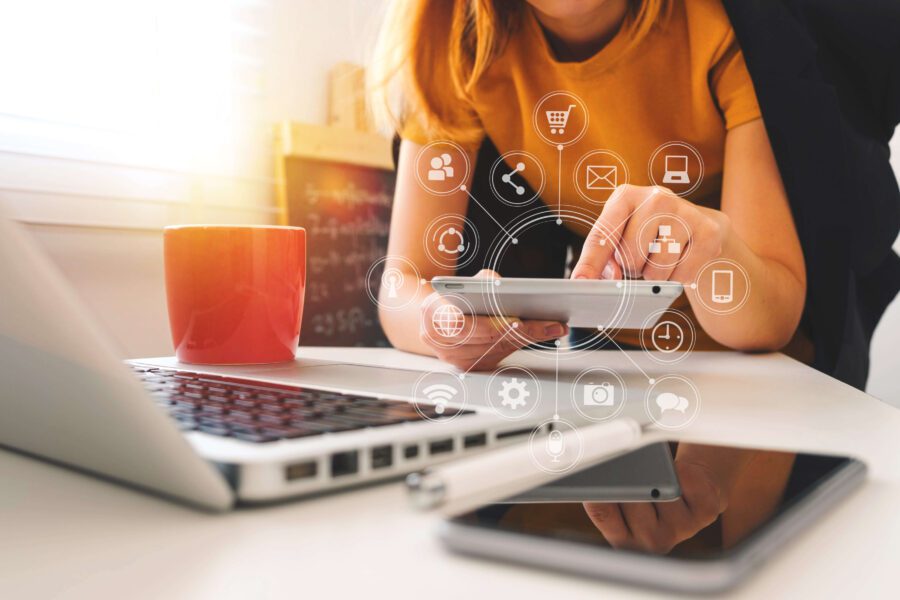Buy Online, Pick-Up in Store, or the more commonly known BOPIS, is solving many challenges for retailers going forward. Not only does the fulfillment option cater to the demands of an increasingly changing customer, but it has the potential to reduce shipping costs, increase sales and bring your business into the future of retail.
What Is Buy Online, Pick-Up in Store (BOPIS)?
Sometimes called click-and-collect, BOPIS has grown as shoppers shy away from in-store browsing and become more comfortable buying online. BOPIS provides the option to combine the online and in-store experience, giving customers a more convenient way to shop.
BOPIS is the act of a customer purchasing an item or multiple items online, but then choosing to pick them up in store rather than having them shipping to them. With BOPIS, the customer is still physically entering the store to receive the item or items.
Other similar options retailers now offer include curbside pickup or BOPAC, which allows customers to receive items outside the store without leaving their car.
Buy Online, Return in Store (BORIS) gives customers flexibility in returns. Many customers still prefer to make returns in store rather than dealing with the hassle of printing a return label, repacking their item, and returning it to the correct shipper.
Also similar to BOPIS, Reserve Online, Pickup in Store (ROPIS) is a method where customers order an item for in-store pickup, but they do not pay for it until they receive it.
Consumers see no difference between the online and in-store shopping experience. These growing fulfillment options are helping to bridge the two experiences so customers can flow seamlessly from channel to channel.
5 BOPIS Growth Statistics
BOPIS really grew in popularity during the COVID-19 pandemic. It became a safe and convenient way to shop at brick-and-mortar retailers without having to go inside. Below are five statistics that look at how BOPIS has grown and what its growth potential looks beyond the pandemic.
- A Digital Commerce 360 survey from August 2020 found that 43.7% of the top 500 retailers with physical stores were offering BOPIS—up from only 6.9% prior to the pandemic.
- Of the 1,141 online shoppers the Digital Commerce 360 report surveyed, 24% said they’ve used curbside pickup multiple times since March 2020, and 52% have used it at least once.
- A report by McKinsey and Co., found that 56% of shoppers plan to continue using BOPIS after COVID-19. Even in a post-pandemic world, people plan to continue some of the same shopping behaviors they adopted in the last year. BOPIS is not a trend that is going away because shoppers have come to appreciate that many conveniences omnichannel shopping can provide.
- The same McKinsey and Co. report found that 65% of surveyed shoppers used BOPIS to counter shipping fees. These customers look up the free-shipping requirements before adding items to their carts. If they are unable to meet the minimum threshold, a BOPIS option may keep the potential sale alive.
- Additionally, McKinsey and CO. predict 10% of all sales will be fulfilled by Click and Collect by 2025.
BOPIS Lets You Cater to Flexible Fulfilment Expectations
Amazon’s promise of two-day shipping forever changed how consumers shop—and now two days isn’t fast enough for some. BOPIS adds an additional layer of flexibility for customers who want more choice, free shipping and quicker service.
BOPIS allows customers to decide which items they want to purchase immediately, and which may be worth waiting for. It also acts as a promise that the item they want to purchase is in fact in stock.
The promise of no shipping fees is also incredibly enticing to consumers. Have you ever walked away from an online shopping cart because you didn’t make the free shipping requirement? Or even paid more at a different retailer because they offered free shipping? You may be surprised by how many people would answer yes. BOPIS provides an alternative that saves both the retailer and customer time and money.
Manage Shipping Costs with BOPIS
Shipping orders from a retailer’s distribution center to a customers’ front door can be expensive. As labor and packaging costs quickly add up, BOPIS offers an opportunity for savings on last-mile shipping.
Allowing customers to pick up items from store can eliminate the shipping cost if that item is already in-stock at the store. Some retailers also ship orders from store to store or from distribution center to store, which can further reduce shipping costs.
COVID-19 may have been the catalyst for the growth we have seen in BOPIS, but it the fulfillment model is one trend that is here to stay. Retailers who can effectively leverage their physical stores as a hub for fulfillment will reap the benefits. The customer has made it clear that more choice and faster service is the future of retail.




